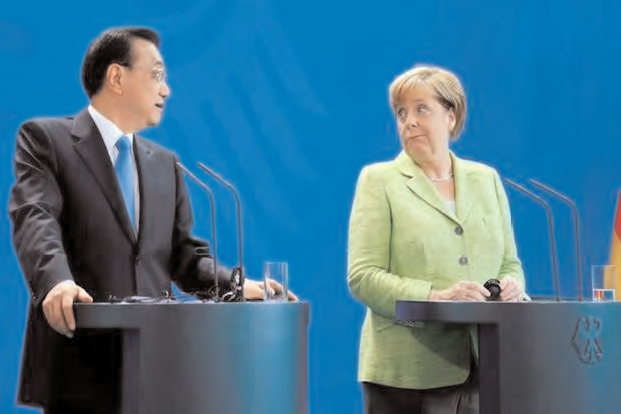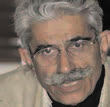
From selling tea at a stall his father set up at a small village railway station and at a bus terminal at a tender age to the prime ministerial throne at 63, Narendra Modi‘s rise is the stuff that fairytales are made of.
Inspired by the lives and teachings of Gautama Buddha and Swami Vivekananda (whose real name was Narendra Dutta), Modi had left his Vadnagar home at the beginning of his youth, joined the RSS as a pracharak (preacher) and was loaned to its political front Bharatiya Janata Party (BJP) as a fulltime worker.
Born in a socially backward family in Vadnagar town of Gujarat’s Mehsana district, Modi rose to the throne of India‘s PM in such a way that would leave many in wonder. Back in 1990s, he was a familiar figure at the BJP headquarters on Ashoka Road in New Delhi as a low-profile general secretary of the party, always polite, calm and smiling, unruffled by even the most uncomfortable questions from the media.
But ever since Modi was deputed by the party to his home state Gujarat in 2001 to rescue the BJP from existence-threatening internecine war to succeed chief minister Keshubhai Patel, he has acquired a stern look and an aggression typical of a battle-hardened politician, a battle that saw him rising steadily through the party ranks and striding up the echelons of the organisation, knocking out in the process veterans like LK Advani and Murli Manohar Joshi.
If Modi was seen as the BJP’s saviour in Gujarat, he was brought in as the party’s prime ministerial candidate at a time when it was out of power for a decade and was struggling with internal squabbles among senior leaders jockeying for positions and prominence. The communal riots in Gujarat which left at least 1,000 people, mostly Muslims, dead in 2002, had made him a deeply polarising figure. Once a poster boy of hardline Hindutva, Modi struggled to shake off that perception by largely steering clear of Hindu nationalist rhetoric on his election campaign trail.
He pledged to focus on development by generating investments, jobs and restoring business confidence. A Supreme Court-monitored probe found no case against Modi in the riots and he himself denied any wrongdoing. However, many still believe that his government in Gujarat did not do much to stop the riots. During campaigning, Modi has crafted an image for himself of a man who renounced worldly life to become an RSS pracharak and as a decisive leader with an alternative vision and governance for a country caught in a policy paralysis over the last few years.
He made instant contacts with leading business houses, aspiring young voters, middle class people and those in rural areas yearning for a change in the backdrop of growing frustration over economic slowdown and corruption scandals. The starkly contrasting perceptions about Modi are best typified by a little-noticed war of words between the BJP and the Congress. As Modi surveyed the vast crowds at his poll rallies, one of his top aides proclaimed the wave of support to turn into a tsunami.
The Congress quickly shot back saying tsunamis leave a trail of death and devastation. Married to Jasodhaben decades ago, a fact he made public only last month while filing his nomination for contesting parliamentary polls, Modi is tech-savvy, often posting his views on social networking site Twitter. DNA India reports: Modi during the phase of his sanyash (seclusion from family life) had just two pair of clothes. But he has been very particular about the way he looks in public.
He wears wrinkle-free and ironed dresses. He has favourite cloth store Jade Blue of Ahmedabad which he prefers for his dresses. He might not have been provided with a visa in 2005 to the US but the irony is the BJP leader has done a three-month course on public relations and image management in that country. A workaholic, Modi sleeps only four hours. He reports to his office around 7:00am and works as late as 10:00pm or even later. He likes to keep a tab on every change and makes sure to keep all the clippings of what his opposition or critics have to say about him.
NaMo Rises
1950
Narendra Damodardas Modi is born on September 17,1950, in Vadnagar village, Mehsana district. As a youth, he worked in his family’s tea stall. Modi joined the Akhil Bharatiya Vidyarthi Parishad, the student’s wing of the Rashtriya Swayasevak Sangh (RSS), and later joined the parent organisation.
1987
Modi joins the Bharatiya Janata Party (BJP) as the young party taps into Hindu nationalism that had engulfed the entire country. The BJP wins a majority in Gujarat in 1995 and Modi quickly rises up the ranks. Very soon, Modi is appointed the party’s general secretary in the state unit.
1990
Narendra Modi comes into the limelight as one of the key choreographers of BJP leader L.K. Advani’s Ram Rath Yatra from Somnath in Gujarat to Ayodhya.
1995
Modi is appointed as National Secretary of the BJP in charge of 5 states and later promoted to general secretary in 1998
2001
Modi gets his big break when he replaces Keshubhai Patel as Gujarat chief minister.
2002
In February that year, he faced widespread flak for failing to contain brutal riots following killing of 59 passengers in a train fire in Godhra. More than 1,000 people, mostly from the minority community, were killed in the subsequent riots. Modi is also accused of encouraging the rioters which he has strongly denied.
2005
US denies Modi a travel visa for ‘religious intolerance’, causing uproar among his followers.
2007
Narendra Modi is elected as Gujarat chief minister for the third time.
2012
Elected as Chief Minister for the fourth time, with BJP cornering 115 of the total 182 seats.
2013
On June 9, BJP appoints Modi as head of the party’s 2014 election campaign. Advani resigns from BJP posts in protest but backtracks later that week. On June 16, Nitish Kumar, head of the Janata Dal (United), pulls out of a 17-year-old alliance with the BJP, making their opposition to Modi’s elevation loud and clear. On September 13, the BJP announces Narendra Modi as the PM candidate for the 2014 elections.
2014
On May 16, the BJP recorded a thumping victory in the Lok Sabha elections under the leadership of Narendra Modi.





Be the first to comment